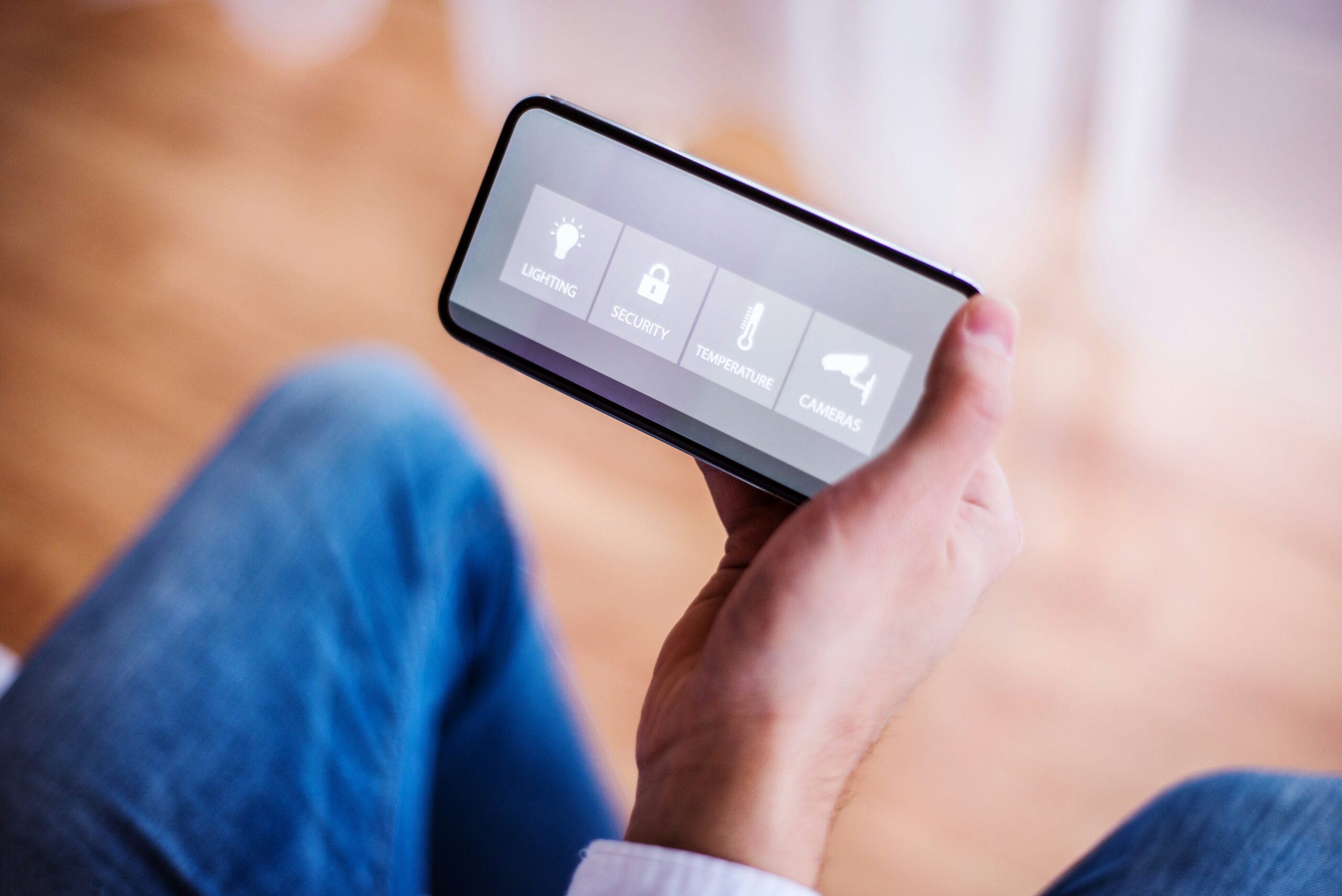What Are Smart Homes?
A smart home integrates various devices and systems, enabling homeowners to automate and remotely control features like lighting, climate, entertainment, security, and even appliances. These systems are connected via the Internet of Things (IoT), creating an intelligent ecosystem that communicates seamlessly. The result? Smarter living spaces that are more efficient, sustainable, and convenient.
Benefits of Smart Homes
- Convenience and Comfort – Automating daily tasks like adjusting lighting or controlling the thermostat gives homeowners more time to focus on what matters.
- Energy Efficiency – Smart technology uses predictive algorithms to save energy, with key devices like Nest Thermostats helping homeowners cut energy costs by up to 10-15%.
- Enhanced Security – Systems like Ring video doorbells and smart locks provide real-time monitoring and greater control over home safety.
- Added Value for Resale – Homes equipped with smart tech often attract luxury buyers and see a higher return on investment.
How Smart Homes are Redefining Architecture
Evolution of Residential Design
Technology has forced architects to rethink traditional spaces. For instance, open-plan layouts are now being paired with adaptive smart lighting, which adjusts brightness levels depending on the time of day or activity. Similarly, incorporating hidden pathways for smart wires during construction ensures a future-forward home design without clutter.
Technology Integration in Architecture
Architects today don’t just create structures; they also design systems. By working collaboratively with tech engineers and IoT providers, architects ensure seamless integration of:
- Smart Thermostats – Provide effortless temperature regulation.
- Smart Blinds and Windows – Adjust automatically to external light conditions for improved energy efficiency.
- Connected Kitchens – Where appliances like smart refrigerators communicate with users for grocery and cooking assistance.
| Device | Function | Impact |
|---|---|---|
| Smart Thermostats | Automates temperature control | Energy savings and convenience |
| Smart Speakers | Connects with voice AI assistants | Simplifies interaction |
| Video Doorbells | Real-time visual monitoring | Enhanced security |
| Smart Lighting | Auto-adjusts brightness | Energy efficiency |
| Smart Appliances | Syncs with users via apps | Workflow simplification |
| Smart Locks | Provides remote locking | Security and peace of mind |
| Home Elevators | Luxury accessibility | Future-proofing design |
Pro Tip: For architects, designing modular spaces allows easy upgrades as newer tech becomes available, ensuring your projects stay ahead of the curve.
Smart Technology for Interior Designers
Interior designers play a pivotal role in harmonizing technology with aesthetics. It’s not enough to simply install gadgets; these devices need to blend seamlessly into the overall design.
Tips to Balance Form and Function
- Concealment – Use built-in cabinetry and panels to hide wires and devices while maintaining access points.
- Minimalist Approach – Opt for sleek, low-profile devices like wall-mounted smart screens or invisible speakers to create a modern, clutter-free look.
- Customizable Lighting – Use smart bulbs and fixtures that not only adjust temperature but also come in various styles to complement the room’s ambiance.
- Zoning Controls – Implement control panels for specific areas or activities, e.g., home theaters or dining rooms.
“Good design always accounts for human interaction with technology without overwhelming visual harmony.” – Laura Bennett, Smart Home Interior Specialist
Future Trends in Smart Living Spaces
It doesn’t stop here! Smart technology is evolving rapidly, redefining what’s possible in homes. Key upcoming trends include:
- Green Smart Homes – Renewable energy sources, such as solar panels integrated into AI management systems, are becoming the gold standard for eco-friendly living.
- AI-Powered Personalization – Intelligent devices are learning to adapt further, suggesting life hacks like meal plans from your fridge or routes via connected cars.
- Voice-Activated Everything – With systems like Amazon Alexa or Google Assistant becoming more advanced, we’re moving towards voice-driven homes where control is effortless.
- Health Tracking Homes – From air quality systems to touchless water health monitors, smart homes are increasingly geared toward holistic well-being.
FAQs About Smart Homes
Are smart homes expensive to set up?
While initial installation may be pricier than traditional alternatives, the long-term savings in energy and the added resale value make it worth the investment.
Can smart homes work offline?
Many devices have offline features, but most functions rely on a stable internet connection. Make sure to have strong Wi-Fi in all zones of the house.
How secure are smart homes?
Security is paramount. Ensure your Wi-Fi is password-protected and your devices are updated with the latest firmware to reduce vulnerabilities.
Do I need an expert to install smart tech?
For heavier integrations like wiring or central hubs, professional help is recommended. However, many standalone devices like smart bulbs or doorbells are easy to set up yourself.
The Takeaway
Smart homes sit at the extraordinary intersection of futuristic technology and thoughtful design, offering a glimpse into how we’ll live tomorrow. Architects are rethinking layouts, interior designers are reimagining functionality, and homeowners are enjoying lives filled with convenience and efficiency.
If you’re dreaming of upgrading to a smart home or designing one from scratch, there’s no better time to start than now. Whether as a homeowner or an industry professional, integrating smart technology into residential spaces not only future-proofs your investment but also transforms the way you live and work.
Are you ready to turn your house into a smart home that works for you?



Leave a Reply